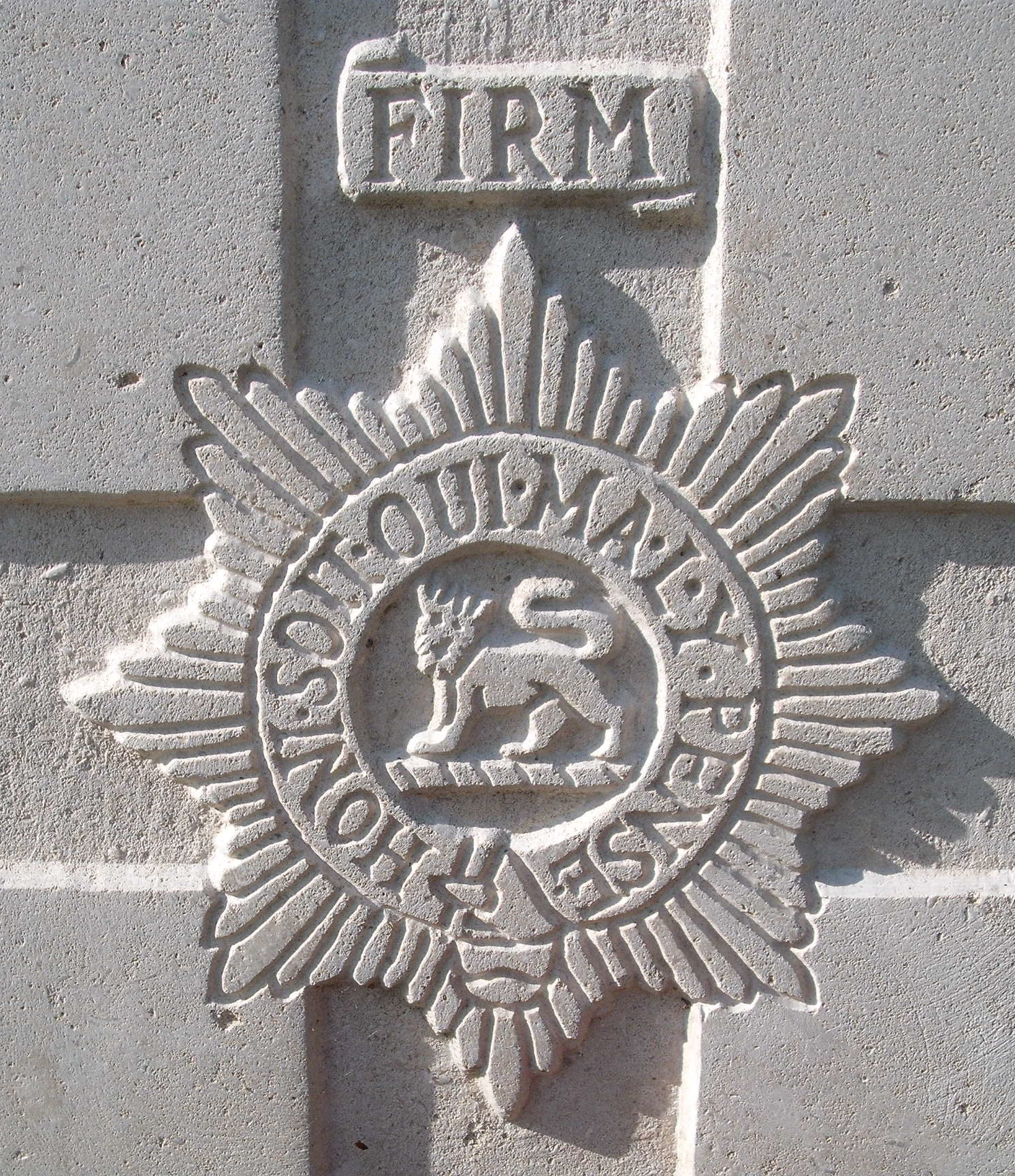Arthur Grubb was born in Leigh and baptised Emmanuel Arthur 17th June 1887. At this time his family lived at Lower Ashfield, Leigh. In 1891 the Census found Thomas and Mary Grubb at Smith End Green, Leigh and ten years later they lived again at Ashfield, Leigh. Thomas Grubb was an agricultural labourer, and in 1901 a fifteen year old Arthur gave his occupation as carter’s lad.
The Great War
He enlisted in 1914 and entered the French theatre of war on 12/8/14. The movement of the British Expeditionary Force (B.E.F) to France began on the 9th August 1914 and was conducted with such secrecy and efficiency that for several days the move remained unknown to the enemy. The 3rd Worcestershire received their orders on the 12th August 1914. Early on the morning of the 13th August, about 5 a.m., the 3rd Battalion left Tidsworth for Southampton. Although they arrived at Southampton Docks at 7 a.m. the same day, it was not till early on the following day that the S.S. “Bosnian” sailed.
Before dawn on August 15th the “Bosnian” cast anchor off Le Havre. It was filled with crowded transports; and owing to the state of the tide it was not until the following day that it was possible for the troopship to go on to its eventual destination, Rouen. At 1.30 p.m. on August 16th the “Bosnian” stood on her way up the Seine. Few river voyages are more impressive than that up the Seine, with its vistas of rolling forests and picturesque Norman villages. The inhabitants on the banks cheered the troops, and excitement on board ran high.
At 9 p.m. the Battalion disembarked on the broad quays of Rouen, where they passed the night billeted in a long shed next to the ship. Early next morning the 3rd Battalion Worcestershire marched through the streets of Rouen to the station and entrained for the front.
The five days which followed were very trying for the Battalion. The weather was hot. Officers and men became accustomed to long periods of travelling in sluggish jolting troop trains, to sleeping anywhere they could lay their heads, and to apparently needless marching and counter-marching, which tired the men and wore out both their tempers and the soles of their boots.
From Aulnoye, where they detrained on August 16th, and were billeted in some cement works, the 3rd Battalion marched on the next day seven miles to Marbaix. On August 20th, the Battalion marched seven miles to Dompierre, from there to Avesnes, where they were received by an enthusiastic populace, and then back to Dompierre. Next day eighteen miles were covered, through Maubeuge to Feignies and then on August 22nd eleven miles more to Ciply
The 3rd Battalion arrived at their billets at Ciply in the early hours of the morning of August 23rd. There the Battalion waited all morning. By the usual fatality which seems always to attend the provision of comforts on service, dinners were cooked and were ready to be eaten when sudden orders came to advance. As the troops moved off the first shell seen by the Battalion shrieked overhead and burst behind them. Rested, but still footsore and now hungry, the 3rd Battalion Worcestershire advanced towards Mons.
The First Battle of the Aisne, September 1914, witnessed the beginnings of modern trench warfare. The consequent frontal assaults on well-defended positions were quick to follow. The machine gun and the artillery battery were to come into their own.
The casualty list steadily mounted during the course of the conflict. The BEF lost somewhere in the region of 13,000 men in just over a week, not great by the standards of the attritional battles of 1916 and 1917, but these losses amounted to a substantial rate of wastage for the ‘contemptibly’ small British Army of 1914.
The battalion moved into trenches at Vailly, France on the 14/9/14 and remained there for some days. There was shelling on most days.
On the 20th firing commenced at dawn and heavy shelling continued all morning. There was an attack on C company. 3 officers were killed and 21OR; 1 officer and 37 OR were wounded and about 30 missing.
On the 21st there was some shelling about midday. Otherwise a quiet day. 2 were wounded on that day.
The Grubb family post-war
His parents lived on at Lower Sandlin, Leigh. Thomas Grubb was buried at Leigh Church on 6th March 1937 aged 74. Mary Ann Grubb was buried at Leigh Church on 17th September 1949 aged 91. Brother James Grubb married Edith Phillimore and was foreman at the brickyard in Cowleigh Bank. Their family are still living locally.
Two of his cousins were killed in the war – John Thomas of the 1/8th Worcestershire Regiment and Charles Henry Grubb of the Royal Field Artillery. The are all commemorated at St Edburga’s Church, Leigh.
Commemoration
Arthur Grubb is commemorated on the La Ferte-sous-Jouarre Memorial which commemorates nearly 4,000 officers and men of the British Expeditionary Force who died in August, September and the early part of October 1914 and who have no known grave. The monument consists of a rectangular block of stone, 62 feet by 30 feet and 24 feet high, with the names of the dead engraved on stone panels on all sides of the monument. The monument is surmounted by a sarcophagus and a trophy carved in stone. At the four corners of the pavement are stone piers with urns, carved with the coats of arms of the Empire.
Berrow's Worcester Journal Supplement, Saturday 18th September 1915
http//malvernremembers
UK, soldiers’ medal card
UK army register of soldiers' effects 1901-1929
1911 Census
3rd Bn, The Worcestershire Regiment war diary
Mrs S Smith 2005 & 2018



